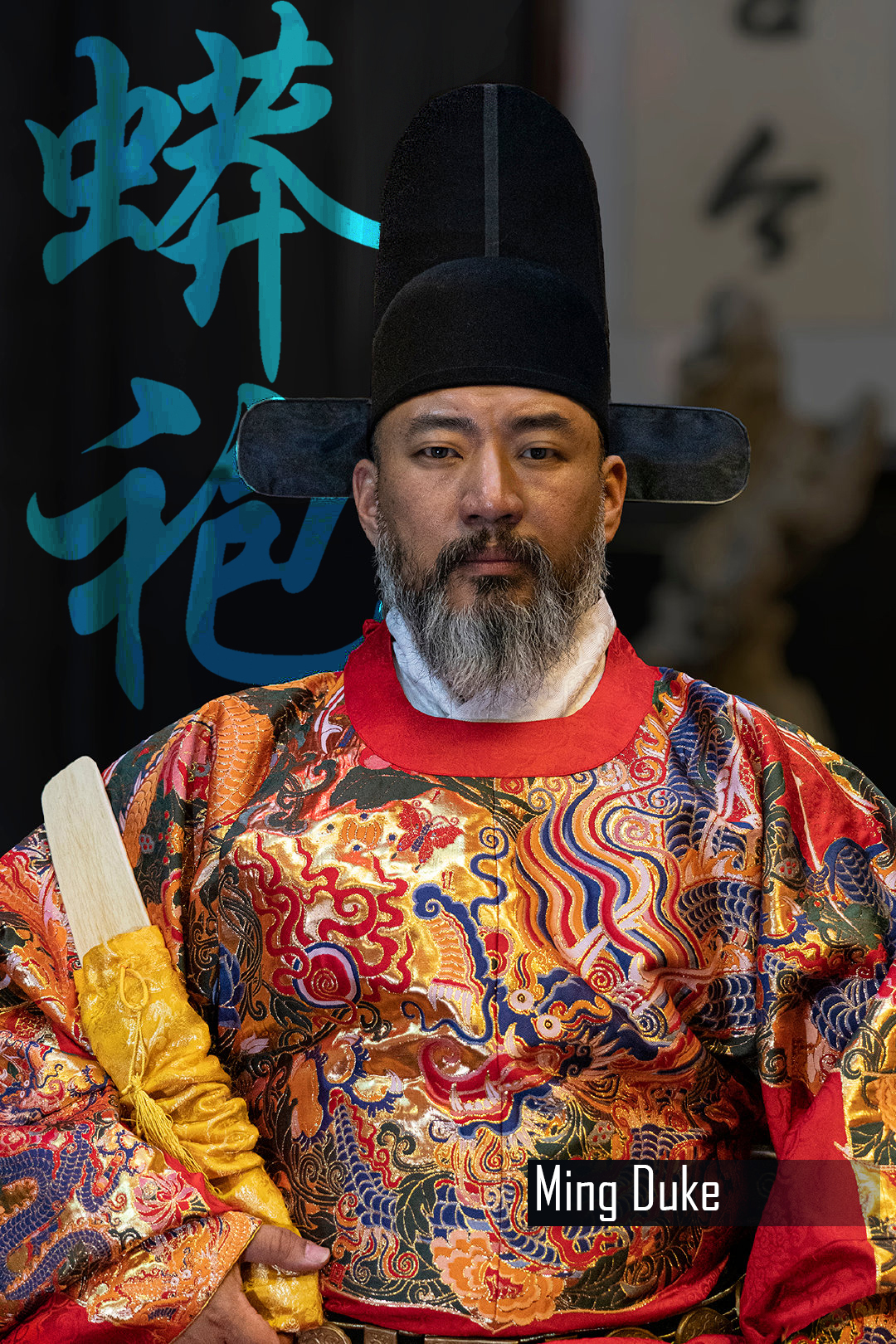Late Tang Noblewoman Donor in Elaborate Dress: 敦煌供养人 (贵妇)
Music: Nonsense
Reenactor: 荷里寒
More references from Peeksofhistory.
Late Tang dynasty lady carrying ornate pipa instrument with a halo of extremely elaborate gilded hairpins- she wears an exquisite silk dress topped with a winding purple pipo (silk wrap shawl) around her sleeves. Winding between her two arms and racing across her back is a bright purple Pibo, or long scarf that's typically worn over the robe and wraps around the wearer's sleeves and back. At a glance they superficially resembles that of the Oiran or Geisha from Edo era Japan- however it should be noted such Tang women are from the highest stratas of their society and these were worn nearly a full millennia before Japan.
Art by 陸曼陀 Danling★Lu
A prominent series of murals in the Mogao Caves at Dunhuang depict a processions of women dressed lavishly, with long, trailing robes, and elaborate hair styles- including golden hairpins radiating out from their elaborate coiffure. These were Buddhist donors, or 供养人(gongyang ren), people who donated offerings (Food, Flowers, money, etc.) or had practiced Buddhism devoutly. In return for their dedication, they're painted into the murals of the caves.
Pibo/ 披帛 (lit. "Cover Silk," or "Wrap Silk": Usually a long scarf that's worn in conjunction with hanfu and wrapped around the wearer's arm and behind the back. Pibo came to prominence during the Sui and later Tang dynasty by way of Persian traders from Central Asian. Some Chinese scholars have postulated that these were inspired by Hellenistic influences, but these assertions have not been confirmed.

Versatility: Pibos could worn in a variety of styles, from the standard form where it draped from the arms or worn like a shawl or wrapping toga. There are 2 distinctive styles of Pibo, one was wider and shorter, used mostly by married women. The other type could be more than two meters in length, and was used mostly by unmarried women. The material used are usually thin and soft, mostly in brilliant colors, with decorative patterns on it made through embroidery, dyeing or printing.
Ways in which the Pibo was depicted worn at various eras of the Tang dynasty.

LATE TANG- AGE OF WARLORDS
A tang dynasty warrior in heavy armor. Digital painting by Haijun Wang. The officer carries a Tang era straight single edged long sword (Tang Dao.)
For a far more in depth coverage of this era, check out Dragon's Armory's article specially dedicated to the last days of the Tang dynasty and the factors that led to its descent into high warlordom here.
Mid & Late Tang. Tang lost much of its west, though after the Tibetan Empire's implosion a Tang loyalist state (Guiyi Circuit) rose up and reintegrated itself back into the empire. In the northeast a number of extremely disloyal Jiedushi retained their territories as feudal fiefs and were more nightmarish vassals than subjects. Morever in obstinacy they married and aligned with each other to resist Tang efforts to reincorporate them. To make situation worse, Tang court was seized by eunuchs.
Major military governors (Jiedushi) and their Circuits by the 2 decade twilight of the Tang dynasty. The large center was monopolized by the treacherous and nearly universally reviled rebel- turned Jiedushi Zhu Wen, while much of the north was held by the Shatuo Turk general Li Keyong. The 2 men were life long rivals.
Dunhuang Donor portrait- noblewoman in elaborate dress and pibo sleeve wrap. She wears elaborate golden hairpins. The painting is dated to around the time of the Guiyi Circuit- a time where a Tang loyalist rebellion retook the region from the remnants of the Tibetan Empire and again reconnected with the Tang in the distant east. "Guiyi" literally means "Return to Righteousness."
Alternative examples of late Tang noblewomen donors
from Dunhuang's Mogao Cave Donor Portraits
Prominent hairpin and elaborate hairstyles
remained well into the Song and Liao
➢ ☯ Futsunomitama
➢ ☯ MK Celahir
➢ ☯ Muramasa
➢ ☯ Thomas Vieira
➢ ☯ BurenErdene Altankhuyag
➢ ☯ Stephen D Rynerson
➢ ☯ Peter Hellman
➢ ☯ SunB




.jpg)
.jpg)


.jpg)
.jpg)



.jpg)
.jpg)



.jpg)






Comments